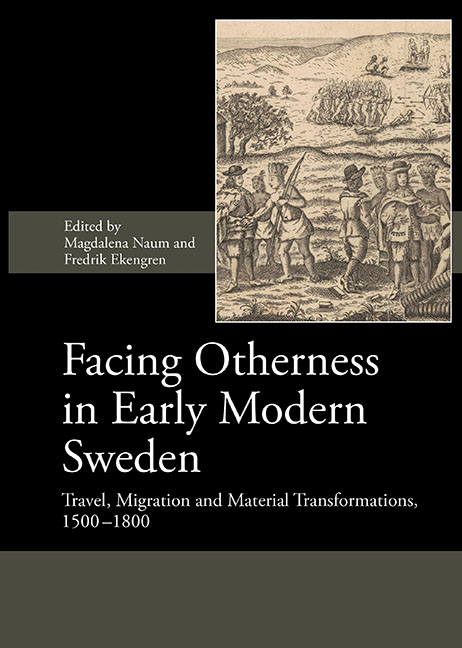Book contents
- Frontmatter
- Contents
- List of Illustrations
- List of Contributors
- Preface
- List of Abbreviations
- I Material Transformations
- II Migration and Neighbourly Interactions
- III Overseas Travel
- Introduction
- 13 “How It Would Be to Walk On the New World with Feet from the Old”: Facing Otherness in Colonial America
- 14 Inscribing Indigeneity in the Colonial Landscape of New Sweden, 1638–1655
- 15 Men You Can Trust? Intercultural Trust and Masculinity in the Eyes of Swedes in 18th-Century Canton
- 16 The Barbary Coast and Ottoman Slavery in the Swedish Early Modern Imagination
- 17 A World of Distinctions: Pehr Löfling and the Meaning of Difference
- IV Conclusions
- Index
Introduction
from III - Overseas Travel
Published online by Cambridge University Press: 23 July 2019
- Frontmatter
- Contents
- List of Illustrations
- List of Contributors
- Preface
- List of Abbreviations
- I Material Transformations
- II Migration and Neighbourly Interactions
- III Overseas Travel
- Introduction
- 13 “How It Would Be to Walk On the New World with Feet from the Old”: Facing Otherness in Colonial America
- 14 Inscribing Indigeneity in the Colonial Landscape of New Sweden, 1638–1655
- 15 Men You Can Trust? Intercultural Trust and Masculinity in the Eyes of Swedes in 18th-Century Canton
- 16 The Barbary Coast and Ottoman Slavery in the Swedish Early Modern Imagination
- 17 A World of Distinctions: Pehr Löfling and the Meaning of Difference
- IV Conclusions
- Index
Summary
The final chapters of the book discuss otherness experienced as a result of personal encounters with the outside world. The case studies from diverse geographical locations – North and South America, Spain, North Africa and China – illuminate the complex processes of defining, interacting with, and coming to an understanding of unfamiliar places and peoples, and grappling with linguistic and cultural barriers.
Encounters with foreign peoples, landscapes and cultures were most commonly brought about by travel. These meetings spurred comparisons and judgements of the other against oneself, confirming and questioning existing stereotypes and adding to the body of knowledge about the inhabitants of exotic parts of the world. Opportunities to travel beyond both the realm and the European continent became more numerous in early modern Sweden. In the 17th century Sweden expanded its international commerce and joined other European nations in the pursuit of profitable colonial trade. Individual seamen and adventurers joined foreign and later domestic trading companies, whose ships took them to Africa and Asia, bringing them face to face with the inhabitants of these continents. Narratives of these encounters – from mid-17th century account of Japan by Olof Erickson and descriptions of South Africa, the Middle East, India and South-east Asia by Nils Matsson Kiöping to numerous 18th-century reports of China written by the employees of the Swedish East India Company – bespoke vast differences and diversity of peoples and cultures and fed the imaginations of the readers back home.
In the 17th century, the politically and territorially ambitious Kingdom of Sweden started to formulate a plan for colonial expansion, following examples of other European nations. In 1624 the king authorized the foundation of the Swedish South Company. Its broadly-defined goals included trade, colonization and missionary work in Asia, Africa, America and the still hypothetical Terra Magellanica (Australia). A concrete result of this ambitious endeavour was the colony of New Sweden established along the Delaware river in north-eastern America.
Besides long-distance travel and colonial endeavours, envoys and embassies created important settings for the encounter with and observation of foreign peoples and cultures. One exotic destination for Swedish emissaries was the Ottoman court in Constantinople. Although geographically closer than Africa or the Far East, the city was no less colourful and “outlandish”, and it supplied a wealth of stories and depictions of eastern customs, Islam and civil life, as well as life at the royal court.
- Type
- Chapter
- Information
- Facing Otherness in Early Modern SwedenTravel, Migration and Material Transformations 1500–1800, pp. 241 - 242Publisher: Boydell & BrewerPrint publication year: 2018

